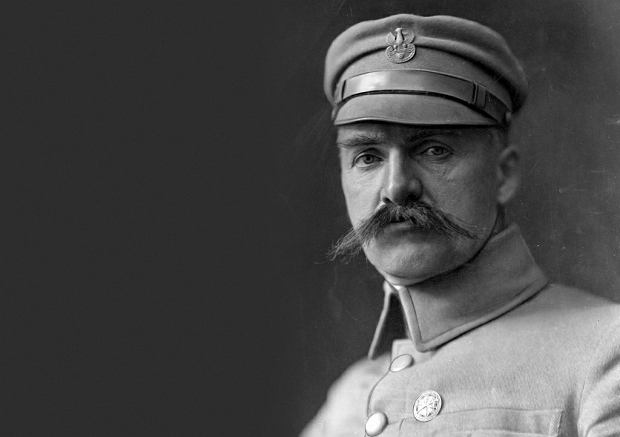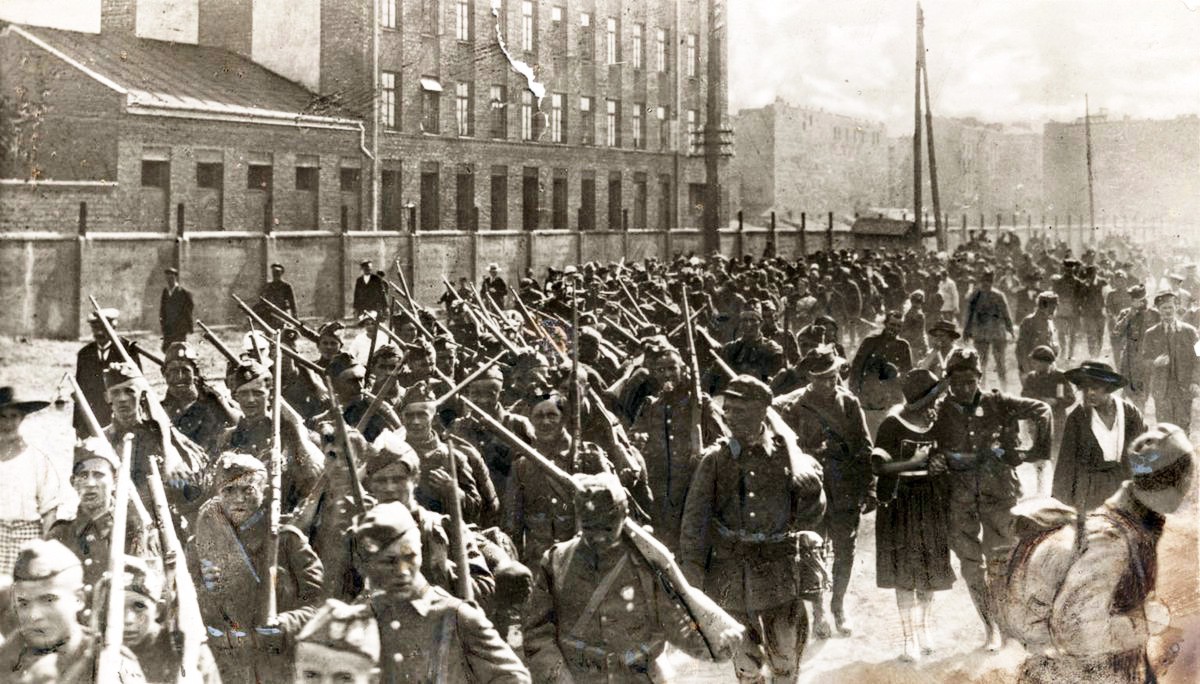A brilliant strategist or a risk taker who was incurable but got lucky at a few key moments? A man of compromise, capable of coping with the greatest opponents when national interests demanded it, or an authoritative autocrat instead? A supporter of democracy, both radical and sincere, or a conservative at heart who readily found common language with aristocrats of the Polish borderlands? A sober realist, comprehending his own weaknesses and those of his milieu? Or maybe a rather insanely self-centered man, convinced of his own greatness to the extent that he wanted doctors to examine his brain after he died for scientific evidence of the genius he was endowed with? To put it simply: a savior in whose absence independent Poland would not exist, or one of the originators of misfortunes that befell Poland in the early decades of the 20th century?
by Kamil Piskała

The dispute between these two sides over assessing Józef Piłsudski – a heated one, at times – was carried on for many years among Polish intellectuals, political leaders and journalists. Late last century, it was noticeable that the temperature had dropped significantly. The “black legend” of Marshal Piłsudski had begun to fade, while his myth as resurrector of independent Poland, already nationalized after 1989, has become widespread ever since. All of that is clearly stated in school textbooks and publicly proclaimed in speeches by dignitaries at commemorations, of course – yet it has become ritualized, no longer generating strong emotions. With this so, does it still make sense to fight fiercely for Piłsudski, and to argue about his biography? Reading the book Piłsudski (nie)znany. Historia i popkultura (Piłsudski (Un)known: History and Pop Culture), published by the Polish History Museum, reveals arguments that in fact it does. Piłsudski was a far more interesting, far more complicated figure than one might judge from annual 11 November commemorations of Poland regaining independence back in 1918.
Piłsudski (Un)known is primarily a record of open discussions about Józef Piłsudski and his biography in autumn of 2017 in Łódź, held at Dom Literatury (the House of Literature) and(Muzeum Tradycji Niepodległościowych (the Museum of Independence Traditions), organized by the journalist and historian Mikołaj Mirowski. Subjects of discussion during the eight meetings included Piłsudski’s involvement in the socialist movement, his geopolitical concepts and rivalry with his opponent Roman Dmowski, co-founder and chief ideologue of the political movement National Democracy, reasons behind the coup d’état in May 1926, and literary and pop-cultural images of Marshal Piłsudski. Those discussions, participated in by excellent historians (including Antoni Dudek, Andrzej Friszke, Paweł Samuś, Tomasz Nałęcz, Krzysztof Kawalec and Grzegorz Nowik) along with journalists and writers, are supplemented by an essay about Piłsudski-based screen characters from Polish cinema and a short text by Paweł Rzewuski presenting the intellectual background of the Piłsudski legend. The book also includes DVDs of the Marshal Piłsudski series directed by Andrzej Trzos-Rastawiecki from 2001, produced by TVP (Polish Television).
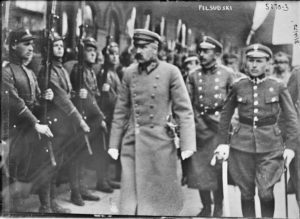
Each of those episodes had been screened to introduce the Łódź discussions, therefore one often finds references to individual scenes or quotations in statements by the invited guests. One must agree with the opinion of Mirowski and his interlocutors, however, who repeat several times that Trzos-Rastawiecki’s series is clearly not drama on a grand scale – we won’t see brilliant actors nor dynamic action. It adhered to a specific didactic convention, presenting crucial episodes from Piłsudski’s political biography as in a textbook (and with considerable sympathy). In combination with the book – small, pleasant to read and accessible, thanks to its dialogue format – we are brought closer to the figure of Józef Piłsudski and the context of his times in a reliable, orderly way. With that said, reading the conversations held by Mirowski leaves the reader with new questions rather than ready, firm answers. This, along with avoiding any infantilization of historical figures, is probably the most important feature of a successful means of popularizing historical subjects.
In reading Piłsudski (Un)known, readers will quickly note that among discussion participants present in the book, those authors with favorable, positive assessments of Piłsudski have the advantage. They skirt the temptation to render Marshal Piłsudski heroic, however, or exaggerate his achievements or merits. Only Paweł Rzewuski speaks with journalistic flair, proposing in the closing essay plenty of surprising generalizations that can be difficult to defend. Rzewuski begins with an interesting attempt to understand the source of beliefs about the momentous historical role of “great individuals” that grew in popularity since at least the late 19th century. The Piłsudski cult during the interwar period is associated with that sort of intellectual atmosphere, with its mixture of popular interpretations of Nietzscheanism, Hegelism, Napoleonic myths and so forth. However, it is difficult to assess how important the role of such elements had been in intellectual culture of the early 20th century, and whether they actually created a zeitgeist, as Rzewuski contends.
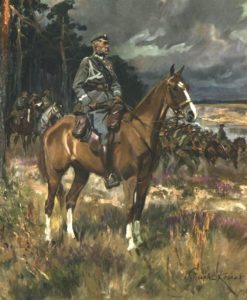
Also doubtful is to what extent such ideas determined the admiration for Piłsudski that such intellectuals as the writer Zofia Nałkowska and the poet Antoni Słonimski had. What’s more, attitudes then encountered in some intellectual circles are in fact projected by Rzewuski onto the entirety of interwar Polish society, by stating – in a disarming, carefree way – that “Poles […] accepted Piłsudski’s dictatorship because they were intellectually prepared for it.” Taking a parenthetical assumption about allegedly overwhelming influence of those intellectual ideas on Polish society at large (could Nietzsche and Hegel ever become widely known?), it must be considered that a thesis about the ready “acceptance” of Piłsudski’s dictatorship can be maintained at best from the perspective of… a Warsaw cafe table in the Mała Ziemiańska, that interwar meeting place of many of Poland’s most prominent artists. Its origins lie in a vision of Second Polish Republic history that does not include mass movements, both political and social, often with plebeian backgrounds – sharply opposite to those of post-Soviet rule – movements, it should be emphasized, that represented a large part of society and possibly, if considered together, even its majority.
No mention is made here of official tampering on the occasion of parliamentary elections held in Poland on 16 November 1930, with Senate elections held a week later, on 23 November, known as the Brest elections, or of repressions faced by opposition parties (were those necessary if the dictatorship was so widely “accepted”?). Transition to authoritarian rule from parliamentary democracy can appear, in the perspective set forward by Rzewuski, to be the result of an intellectual exercise, thus losing its deep social dimension. Perhaps, however – as Prof. Antoni Dudek suggests in the conversation about the 1926 coup – one should look at that May coup and then the relatively moderate attitude among the opposition in the heated years of 1929 and 1930 less as the victorious manifestation of Piłsudski’s “will to power,” interpreting society’s attitude as reverent approval, and more as an instance of the opposition’s deep responsibility (others will term it procrastination), who chose to submit to political blackmail by Piłsudski rather than precipitate a civil war.
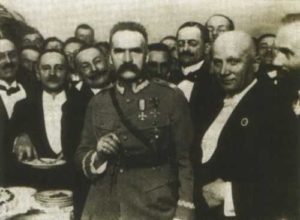
One may also agree with Professor Dudek’s suggestion that the dictatorship period in Piłsudski’s biography still requires deep critical reflection, not downplaying it or describing it – as in Rzewuski’s view – in vague terms of the zeitgeist. Speaking about enforced commemoration of Piłsudski after 1989, the historian notes: “Nevertheless, I think that there are too many streets and monuments [were named], and the Piłsudski cult has become exaggerated – precisely because of what the Marshal did in 1926. A democratic state cannot ignore that military coup and the system that Piłsudski established afterwards.” Dudek adds further word of warning: “Failing to assess Piłsudski and his role over the past quarter-century is one reason for what may happen in coming years: a growing acceptance of various forms of authoritarianism in Poland.” In other words, cultivating Piłsudski’s figure without further reflection, combined with lenient assessments of interwar authoritarianism, may help create a favorably economical prosperity for political forces advocating “strong rule.” Ignoring such a warning would be unwise as populist tendencies rise across large parts of Europe and traditional political institutions lose the confidence of the public.
It seems, moreover, that despite diverse opinions, the insistence on rewriting and interpreting Piłsudski’s biography meets the approval of most interlocutors with statements included in Piłsudski (Un)known. Subsequent discussions conducted by Mikołaj Mirowski appear to confirm that the need for new approaches grows – not only those synthesizing results of source studies conducted in the period following publication of the classic biography by Andrzej Garlicki [1988], but also referring to theoretical achievements of world historiography, freed from “the Piłsudski dispute,” packed as it was with emotion and carried on for decades by Polish intellectual elites of the 20th century. Clearly, attempts to face this challenge will draw the attention of both of academic historians and also of the wider reading audience. Who knows – perhaps the perspective they propose will also become an inspiration for creators of mass culture, and we will one day see an intriguing, unconventional film portrait of Piłsudski, as satisfying as all the participation in Mirowski’s conversations.
Author: Kamil Piskała
Translation: Alicja Rose & Alan Lockwood

